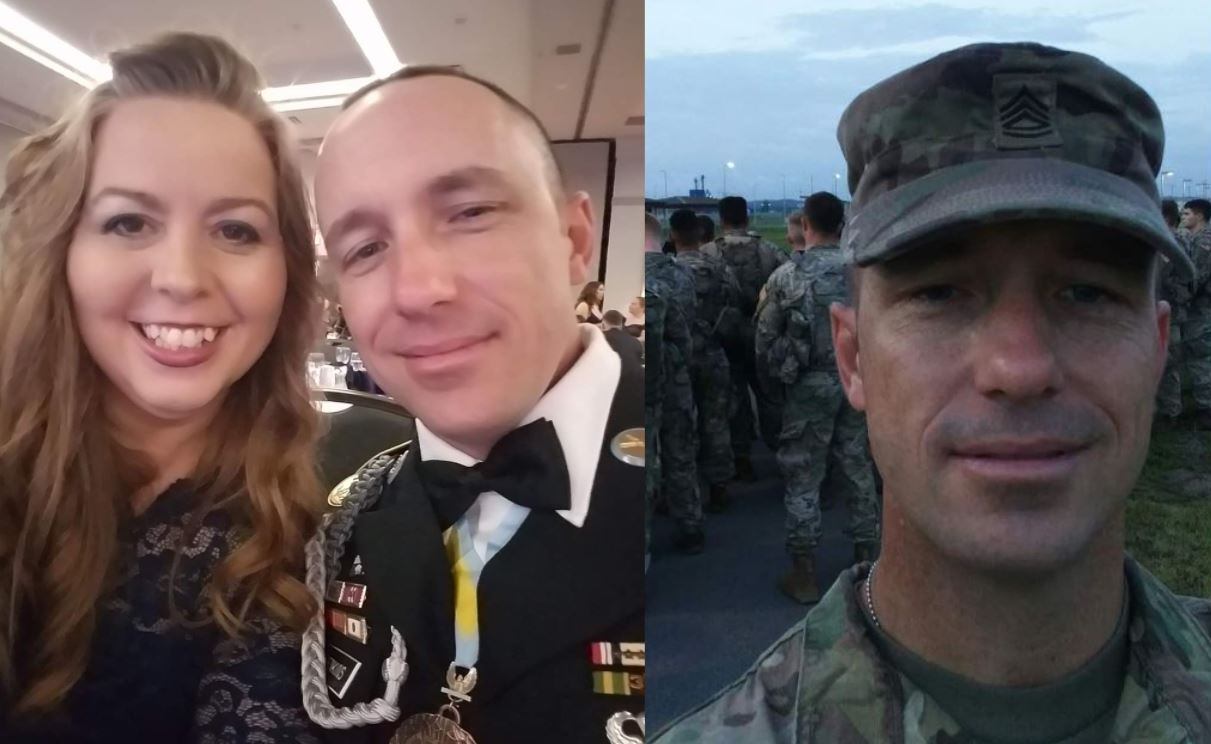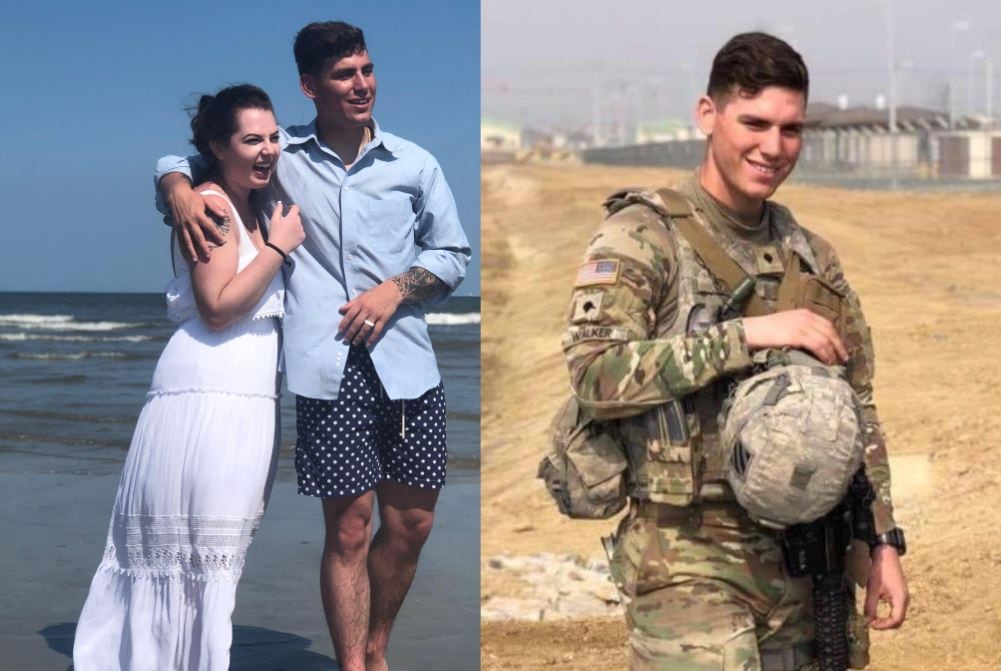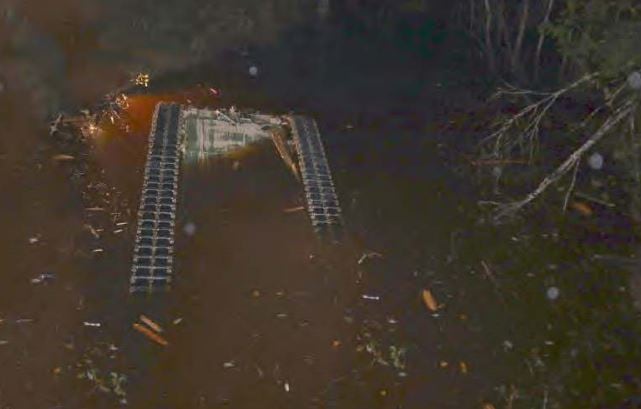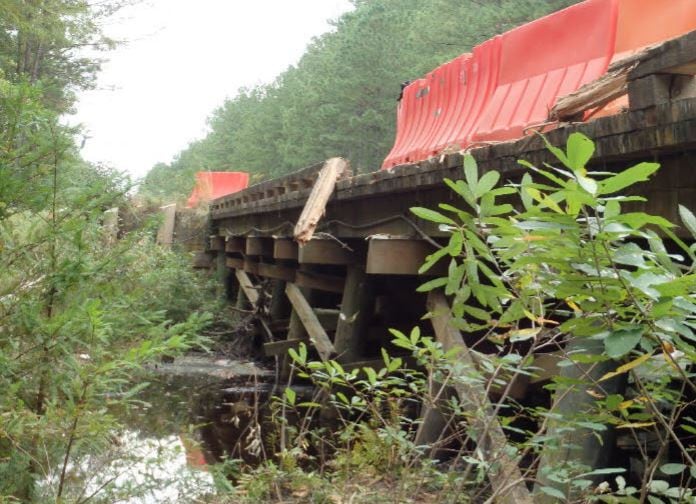With their lights off, the Bradley fighting vehicles lumbered through the darkness at Fort, Stewart, Georgia, in the wee hours of Oct. 20, 2019. But mist and humidity degraded some of the vehicle optics soldiers were using to find their way.
A low blanket of clouds blocked out much of the moonlight that could have illuminated their night vision devices. And the poor weather, remnants of a tropical storm, prevented temperature changes throughout the day that would have helped contour objects in their thermal devices after dark.
Not long after the decision was made to turn off lights and drive using optics, a Bradley crew flipped off a bridge they didn’t even know they were crossing, according to an investigation into the fatal mishap obtained by Army Times through the Freedom of Information Act.
Army officials said no single factor caused the accident. But witness interviews highlighted common problems that came to a head after the company commander decided to “go blackout” on a roadway intended to be driven with white lights.
The problems included vehicle optics that failed in the murky weather; a bridge that couldn’t be seen by all soldiers; drivers who were tired from the multiday exercise; dead spots that inhibited radio calls; and an emergency exit for the driver that was blocked by gear when the vehicle ran off the bridge and into the water below.
In briefing slides, the unit acknowledged that “company leadership failed to implement effective measures to mitigate the risk posed by crossing the bridge under limited visibility.” But no administrative or disciplinary action was taken against leaders following the incident, corps-level officials told Army Times.
Signs of problems
Roughly a dozen vehicles were negotiating Route 129 in Fort Stewart’s training area on the night of the mishap.
Sgt. 1st Class Bryan A. Jenkins, 41, kept watch through the hatch of the Bradley he commanded, guiding the vehicle’s much younger driver, Pfc. Antonio G. Garcia, 21, according to a platoon leader who spotted them before the accident.
Jenkins “always did the right thing" like that, according to the platoon leader’s witness interview summary. All names in the investigation were redacted except those who died.
Sgt. Thomas C. Walker, 22, served as the vehicle’s gunner that night, adding a third man to the front of the Bradley. In the back sat three other infantrymen, one napping as the vehicle continued forward.

Jenkins joked with Garcia a bit, an unnamed soldier in the back recalled, but there wasn’t a lot of talking. A platoon sergeant told investigators that Garcia was one of the most experienced drivers in the company, but even he had trouble peering through the weather and darkness.
Jenkins made a radio call to relay the problem, saying the optics inside their Bradley weren’t working.
The issue wasn’t unique to them. Before the fatal roll over, another Bradley crew, also experiencing troubles with their optics, accidentally drove into the woods. Multiple troops reported that their vehicle optics were “flaring out" and “fogging up,” or simply “going out," according to summaries of witness interviews.
The soldiers had been in the field for two days before the mishap, preparing for an upcoming rotation to the National Training Center at Fort Irwin, California.
Walker’s wife, Taylor, told Army Times she barely saw her husband due to constant training. She said she was thankful for the help offered by Walker’s unit in the wake of his death, but hopes the Army as a whole learns something from the event.
“Don’t look at it as another accident or tragedy,” she said. “Three wonderful men — one being a father, another a husband and one never starting his life — were taken too soon.”
The sentiment was shared by Garcia’s mother, Teresa.
“I just don’t feel that the military did everything they could to protect these guys," she said. "They were careless. They were in a hurry. And the circumstances were yelling out to them. The weather, the technical difficulties, all those things were screaming out to the commanders to pay attention, and they did not.”
A bridge they didn’t see
Everything was silent as the crew approached a bridge over Canoochee Creek. Then there was a loud pop and the soldiers felt their Bradley slide for about seven seconds.
The Bradley had hit the bridge’s guard rail. Unable to see that they were not on a roadway, Garcia did the sensible thing and corrected his vehicle’s path off the object.
The Bradley fell 15 feet, landed in water upside down and was submerged up to its tracks. Two of the infantrymen in the back were awake; a third was unconscious.
The turret was already filled with water that was now pouring into the rest of the vehicle, but the turret door was closed. Those in the back were talking, but they couldn’t hear anything from Jenkins, Garcia and Walker.

The vehicle’s alarms started sounding. An infantry team leader pushed the ramp door open and the water level rose rapidly in the back compartment.
The team leader ducked out to the surface before holding his breath and diving back down, “reaching for whoever he could feel in the water," the investigation reads. The first person he pulled out was conscious. The second was not. The team leader pulled him to the surface and began “pounding on his chest” until he spit up water and regained consciousness.
Once the three soldiers in the back of the Bradley were out, they ran to flag down other vehicles, which appeared to have not noticed the accident at all.
Going ‘blackout’
Route 129 is an administrative road through the training area, intended to be driven with white lights, according to multiple witness statements.
Because of safety concerns, the company commander first told his troops to keep lights on while they drove the more treacherous back roads. That was despite being yelled at by a major from another battalion to turn their lights off.
But as they prepared to turn onto the administrative road, the company commander decided to use the opportunity to go blackout.
After all, Route 129 is straight, wide and familiar to the soldiers, he reasoned. Plus, the brigade and division commanders had been out observing training that day, and driving tactically is an important skill.
“The main reason the commander made the decision to go blackout drive was to meet the brigade commander’s intent, and there were a lot of eyes watching them‚” reads the summary of a witness interview with the company’s acting first sergeant.

As soon as the drivers left the back roads and turned off their lights on Route 129, “things started to go wrong,” one section sergeant said.
A Bradley accidentally drove into the woods because the driver’s vision enhancement optics inside "went out and turned white.”
Others began having issues with radios. But many had trouble seeing through their vehicle optics in the poor weather.
Some drivers broke out their personal night vision goggles to help. In the back of vehicles, other infantrymen dozed off, tired from days of training.
Rest and maintenance
All of those involved in the mishap belonged to an unnamed company under 1st Armored Brigade, 3rd Infantry Division. Their brigade commander, Col. Trent Upton, expressed regret over the accident during a recent telephone interview.
“The 20th of October will be a day that’s ingrained in my mind as a commander for the rest of my life,” Upton told Army Times. “Losing those soldiers is something that affects us, and me, every day.”
But Upton defended the decision to drive blackout on Route 129.
“It was designated as an administrative route,” Upton acknowledged. “That said, due to the width and how often the unit had traversed it in the past, it was an opportunity for that specific unit to get some additional training in for night driving proficiency.”
Since arriving in the field, they had trained nonstop with “little time to conduct maintenance on their Bradley vehicles,” a platoon sergeant told investigators. The company had also been short on personnel in all leadership positions, he added.

A section sergeant told investigators that he never slept during field exercises and both of his drivers were “extremely tired.”
Upton said he couldn’t address individual soldiers' statements, but emphasized that rest cycles are factored into all his brigade’s training.
There are also guidelines, he added, that require a minimum of six hours of sleep for drivers.
“The company maneuver training lanes that we were executing, again, were designed to deliberately slow things down … as well as [offer] time for recovery and soldier rest plans,” Upton said. “And then we adjusted those schedules throughout our execution window.”
‘Hell hole’ wasn’t clear
After escaping the roll over and flagging down another Bradley crew, a group of soldiers sprinted back to the water. Others ran for help and sought reception to make emergency calls.
In the creek, soldiers worked tirelessly to recover their teammates. They took turns diving into the vehicle so they could each catch their breath. Eventually, they pulled Jenkins and Walker from the back of the Bradley and began CPR on both men. They then pried open the driver’s hatch, but still couldn’t find Garcia.
An officer ultimately told the soldiers to get out of the water because an M88 recovery vehicle had arrived to tow the Bradley from the creek.
Garcia was recovered afterward, but all three soldiers were pronounced dead at the scene. The causes of death were ruled as drownings, an Army official said.
The team leader who survived the roll over told investigators he had to switch Bradleys after their original vehicle’s optical device also broke. When they got into the new Bradley, the back was clean, but the “hell hole,” a small corridor the driver can escape through in an emergency, was filled with gear.
A platoon leader stated the same, telling investigators that “Garcia drowned trying to get out of the hell hole because all the gear that was shoved in there.”

After the accident, the entire brigade stood down from training to share “lessons learned,” such as the importance of keeping the hell hole free and clear, according to Upton.
It wasn’t stated in the investigation why the hell hole was so cluttered, but it appeared to be a factor of the vehicles breaking down and soldiers switching loads.
“We’ve also, as I mentioned, worked very hard to try to apply the lessons learned from this tragic event to prevent similar incidents from happening in the future," Upton added.
Fixes and more training
The investigating officer didn’t recommend any disciplinary actions following the incident. Lt. Gen. Michael Kurilla, the corps commander overseeing 3rd Infantry Division, agreed with that stance, said his spokesman, Col. Joe Buccino.
Buccino added that the “XVIII Airborne Corps leadership is dedicated to mining this incident for inefficiencies and hazards we can solve for future training events at all echelons.”
One hazard on which they’ve focused is thermal crossover, a natural phenomenon in which the temperatures of objects aren’t different enough to contrast against one another on infrared imagery.
The weather brief, included in the investigation, noted that dense cloud cover prevented the bridge from heating up during the day and cooling off at night. That, combined with the lack of ambient light, made it difficult to spot.
Another soldier driving that night stated that he couldn’t see the signs warning of a bridge ahead. When he hit the right side of it, he said, it felt like they had driven over a speed bump.
New software has been given to weather forecasters at Fort Stewart to help with that problem, said 3rd Infantry Division spokeswoman Lt. Col. Lindsey Elder. The newly installed “terrain awareness and warning system” hadn’t been used at the range since 2014, due to an incompatibility with the Army network, according to the investigation.
The software does many things, but one feature is the ability to predict when thermal crossover is occurring on the range, though it’s impossible to predict all the time, Elder cautioned.
Driver training across 3rd Infantry Division also increased threefold after the incident to address the issues soldiers experienced with their optical devices in the Bradley vehicles, according to Buccino.
Fort Stewart officials said bridge markings were also put up that can now be seen under blackout drive optics in thermal and infrared.
Because of the radio issues on the night of the accident, the division conducted an assessment of the FM broadcasting, land mobile radio and call box coverage in the training areas to identify gaps in coverage and create a map showing where units required more antennae.
‘Shame on them if it happens again’
Of the three soldiers lost last October, Jenkins and Walker were both married. In Jenkins' case, he is also survived by a son and two daughters.
Jenkins was a veteran of two deployments during the Iraq War. His platoon leader considered him the most experienced person in the company on the Bradley vehicles.
Walker joined the Army in 2016 and had previously deployed to South Korea. He liked hosting barbecues with friends and family, according to his obituary, and he had an infectious smile.
“He loved his job and what he did," Taylor Walker recalled. "He told me every day, ‘You will be okay if I don’t come home.' I’m blessed for our time together.”
Garcia had been in the Army the shortest of the three men. He was the oldest of triplets, his mother said, and his parents' only son. He always defended his sisters and stood close by his friends who were going through hardships.
“He was just a good soul, and it’s very hard to be such a good person,” Garcia’s mother said.
A month after the fatal accident at Fort Stewart, another Bradley overturned at Camp Humphreys, South Korea, claiming the life of a 20-year-old soldier there.
“I just hope that the military does something to slow down, to be more careful," Teresa Garcia said. "And shame on them if it happens again. We saw it happen right after Antonio died, there was the incident in Korea, and I understand that accidents happen, but this is too much.”
The soldiers’ division commander, Maj. Gen. Tony Aguto, offered his condolences to the three soldiers' families in a statement to Army Times prior to publishing this story.
“I want to personally assure you that we have taken this very seriously," Aguto said. “The readiness of our mission is paramount, and we must be able to answer the nation’s call. While this loss was tragic, what we do is inherently dangerous and we continue to learn and improve. We have made a number of improvements since that day, which have been shared across the Army.”
Kyle Rempfer was an editor and reporter who has covered combat operations, criminal cases, foreign military assistance and training accidents. Before entering journalism, Kyle served in U.S. Air Force Special Tactics and deployed in 2014 to Paktika Province, Afghanistan, and Baghdad, Iraq.





